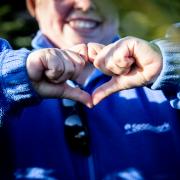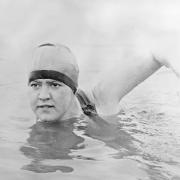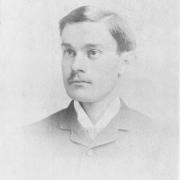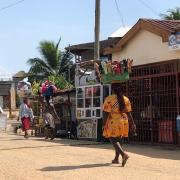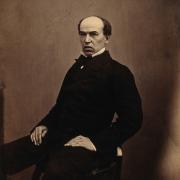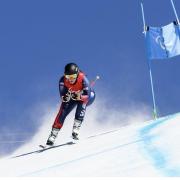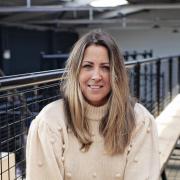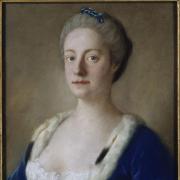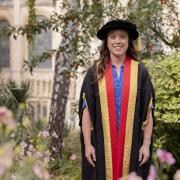We’re all familiar with blue plaques, but could Kent Life come up with 10 notable births in our county – avoiding the most obvious ones? See if you agree

- Ashford (1616)
In an earlier evocation of Bletchley Park's brilliance, John Wallis (1616-1703) was a codebreaker, a clergyman-mathematician who deciphered enemy messages, firstly for the Roundheads during the English Civil War, and later for King William III (William of Orange).
He was 'chief cryptographer' between 1643, the year after the Civil War began, and 1689, the year after the 'Glorious Revolution' and accession of William and Mary.
Wallis is also credited with having introduced a symbol (?) to represent infinity. 'Ah, infinitesimal calculus' I hear you say. Yes, he was one clever cookie.

- Sittingbourne (1688)
The year of that 'Glorious Revolution', when the Catholic-leaning James II was displaced by Protestants William and Mary, was also the year alleged fraudster Lewis Theobald (1688-1744) was born.
Theobald led a colourful life, vying with Alexander Pope to be an acknowledged translator of Shakespeare, the two men generating a mutual hatred in the process. Theobald was the better editor, but Pope (the better poet) proclaimed Theobald a 'dunce'.
Theobald's play Double Falshood (sic) was allegedly a re-working of a lost Shakespeare play, or was he just passing off his own material as the Bard's?

- Canterbury (1790)
A cryptographer and a possible fraud; this is going well. Isaac Nathan (1790-1864) was more mainstream, a musician, but then he was also the first composer to harmonise Australian aboriginal music, which sounds decidedly revolutionary for the time.
He also collaborated with Lord Byron on Hebrew Melodies, was a tutor to Princess Charlotte, the Prince Regent's daughter, eloped twice, fought a duel, got in debt, undertook 'mysterious services' for the royal family (spying?) and wrote the first Australian opera, before becoming the Southern Hemisphere's first tram fatality. Mainstream not.

- Tonbridge (1799)
To be born female at the fag-end of the 18th century and then forge a career as a photographer and botanist was really quite remarkable. Anna Atkins, née Children (1799-1871) was educated by her own dad, John Children, another scientist, and is often lauded as the first person to publish a book illustrated with photographic images, Photographs of British Algae: Cyanotype Impressions (1843).
Both Anna's father and her husband John Atkins were friends of William Henry Fox Talbot, the photography pioneer, and she was able to learn first-hand from Talbot.
Anna clearly didn't waste the opportunities she was given.

- Broadstairs (1816)
Born three years before Princess (later Queen) Victoria, Thomas Crampton (1816-1888) was an engineer and pioneer of loco construction, who was also responsible for the first successful cross-Channel submarine cable, laid between Dover and Calais (1851). It was in use until 1859.
He also designed an automatic, hydraulic, tunnel-boring machine, as he pondered the possibilities of a Channel Tunnel. Crampton married Louisa Hall, a singer and friend of Jenny Lind, the 'Swedish Nightingale'.
Eldest daughter Ada died aged four, a grief-stricken Crampton donating a window to St Peter's, Broadstairs in her memory.

- Wouldham (1819)
The phrase 'you couldn't make it up' now comes to mind. Three years after Crampton emerged in Broadstairs, Henry Coxwell (1819-1900) was born in Wouldham at the Old Rectory (or Parsonage), which was replaced in 1874, after its predecessor was deemed 'unhealthy'. As a boy, Henry became interested in balloons and made his first ascent in August 1844, when he was aged 25. He somehow found himself managing the Prussian balloon fleet during their 1870 war with the French and his last trip up was in 1885. Henry also had his own balloon factory.
- Goodnestone (1862)
Having written Kent's Most Haunted (Kent Life November 2019), I was excited to find an author of ghost stories born in the county. Montague James (1862-1936) was an academic and medievalist best remembered for his tales of 'things that go bump'.
Born at The Parsonage (or Clergy House) in Goodnestone, James concocted stories that relied on location, character and discovery, the last bit the key moment when the supernatural is unlocked, with all the attendant consequences.
Curiously, James' birthplace is reputedly haunted: his fertile imagination perhaps conjured up some genuine spooks.
- Walmer (1868)
If an artist can be remembered for one work, then perhaps it is Leonardo da Vinci and Mona Lisa. Or possibly John Hassall (1868-1948), the man behind the classic railway poster 'Skegness is so bracing'. Born in Walmer, Hassall studied in Paris and Antwerp and became the 'go-to' man for modern poster design; he was its acknowledged pioneer. Of all the railway posters, his jolly Skegness one has been the most enduring.
Hassall was also an illustrator of children's books, in a life that seemed, er, relatively hassle-free.
- Gillingham (1878)
Dame Kathleen Courtney (1878-1974) was a prominent figure in the UK suffragist movement, a peace activist, believer in international co-operation and Joint President of the United Nations Association, whose charter she helped to compile. Born in Gillingham, at 1 York Terrace, the daughter of a Royal Engineer's officer, Kathleen deserves to be better known. She spoke in Westminster (1968) to mark 50 years of women attaining the vote and was awarded the UN's Peace Medal (1972).
- Maidstone (1900)
Our final stop is in Maidstone, the birthplace of mountaineer Francis ('Frank') Smythe (1900-1949), who was a member of three Everest expeditions in the 1930s (1933, 1936 and 1938).
First to climb the Himalayan peak Kamet (1931), and the holder of a world altitude record, Smythe would go on to command the Commando Mountain Warfare School during the Second World War.
As if these accomplishments weren't enough, Smythe was also an accomplished photographer, botanist and author.
On the down side, it was said that he could be quite ill-tempered, but that his mood improved with altitude.
Notable 20th century births in Kent
1913: Dr. Richard Beeching, bogeyman behind British railway closures (Maidstone)
1916: Sir Edward Heath, Prime Minister between 1970 and 1974 (Broadstairs)
1916: Trevor Howard, actor who starred in Brief Encounter (Cliftonville)
1922: Sydney Keyes, Second World War poet killed in action in Libya (Dartford)
1924: Hattie Jacques, comic actress including Carry On films (Sandgate)
1938: Frederick Forsyth, author of The Day of the Jackal (Ashford)
1939: Sir David Frost, broadcaster (Tenterden)
1940: Zandra Rhodes, fashion designer (Chatham)
1943: Sir Mick Jagger and Keith Richards of the Rolling Stones (Dartford)
1946: Brenda Blethyn, TV and film actress, including Secrets and Lies (Ramsgate)
Notable births in history
c.1422: Sir William Caxton, first English printer (Tenterden)
1503: Sir Thomas Wyatt, poet, imprisoned for alleged adultery with Anne Boleyn (Allington)
c.1530: Sir Francis Walsingham, Elizabeth I's 'spymaster' (Chislehurst)
1564: Christopher Marlowe, playwright; some believe he wrote Shakespeare's plays (Canterbury)
1564: William Adams, explorer, first Englishman to visit Japan (Gillingham)
1578: William Harvey, discovered the circulation of blood (Folkestone)
c.1598: Sir William Waller, Parliamentarian commander during English Civil War (Knole)
1640: Aphra Behn, believed to be the first professional female author (Wye)
1663: Viscount George Byng, admiral, commanded against French and Spanish (Wrotham)
1727: James Wolfe, military commander, died in moment of victory at Quebec (Westerham)
1844: Robert Bridges, poet who became Poet Laureate in 1913 (Walmer)
1852: Sir John French (Earl of Ypres), military commander during the First World War (Ripple)
1866: H.G. Wells, sci-fi writer of The War of the Worlds (Bromley)
1874: Mary Tourtel, author, creator of Rupert the Bear (Canterbury)
1885: Sir Malcolm Campbell, world land and water speed record holder (Chislehurst)
1886: Siegfried Sassoon, decorated First World War hero and poet (Brenchley)
1889: Friniwyd Jesse, author of Moonraker and a female war correspondent (Chislehurst)
1889: Enid Bagnold, author of National Velvet (Rochester)
1892: Vita Sackville-West, and garden designer, novelist and poet, including of All Passions Spent (Sevenoaks)
1895: Sir Malcolm Sargent, orchestral conductor, organist and composer (Ashford).




